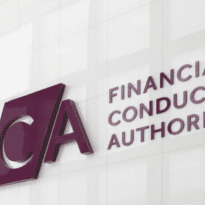Investors need to be careful not to get caught up in ‘greenwashing’ as the market for green bonds reaches new heights, warns Aegon Asset Management.
Demand for green bonds has soared in recent years, with global issuance increasing from just $38 billion in 2015 to $226 billion in 2020. Issuance hit a record $85 billion in the third quarter of last year, marking 69% year-on-year growth.
James Rich, senior portfolio manager, Aegon Asset Management, says: “Issuance of green, social and sustainability bonds surged in 2020 as companies rushed to fund sustainability initiatives and we expect this growth to continue into 2021. However, many first-time labelled bond issuers are opportunistically issuing to take advantage of lower interest rates relative to plain vanilla financing. As a result, the risk of greenwashing through labelled bonds is growing, indicating a need for investors to carefully assess each issuance on a case-by-case basis.
“In the absence of a common industry standard, issuers of labelled bonds can be prone to false promises. Many companies fail to publish promised reports on their labelled bonds or inadequately report on the metrics that are most relevant to measure the success of the identified projects.”
With a lack of industry-wide standards on green bonds, Rich advises investors to thoroughly assess each labelled bond issuance across five key areas: use of proceeds; governance; frameworks; reporting and alignment.
According to Rich, investors should ensure that the offering documents outline the projects and the intended money allocation and evaluate the company’s internal governance framework around the use of proceeds.
Investors should also consider the use of green bond frameworks, such as Green Bond Principles by ICMA, which can help to verify if the issuance is aligned with a particular green investment criterion and assess the green bond reporting framework.
Rich explains: “Post-issuance reporting is fundamental to verify the impacts of the issuance proceeds on eligible projects listed at the outset of green bond issuance. The most robust issuance clearly outlines that the proceeds are allocated and includes relevant metrics to measure the success of each project. However, since reporting is not enforced, often companies will not follow through on reporting after issuance. In those situations, we engage with companies to encourage sufficient reporting.”
Finally, investors should consider whether the issuance is a one-off or part of a long-term strategy to improve the sustainability of the business.
Rich adds: “Labelled bonds can be an attractive sustainable investment when the use of proceeds is fully aligned and transparent. However, there are numerous issuers with products, services and business practices that address sustainability issues that do not issue labelled bonds.
“By identifying issuers with products, services or practices that align with sustainability initiatives, investors can identify numerous opportunities to invest sustainably while pursuing competitive excess returns over the long term.”



































